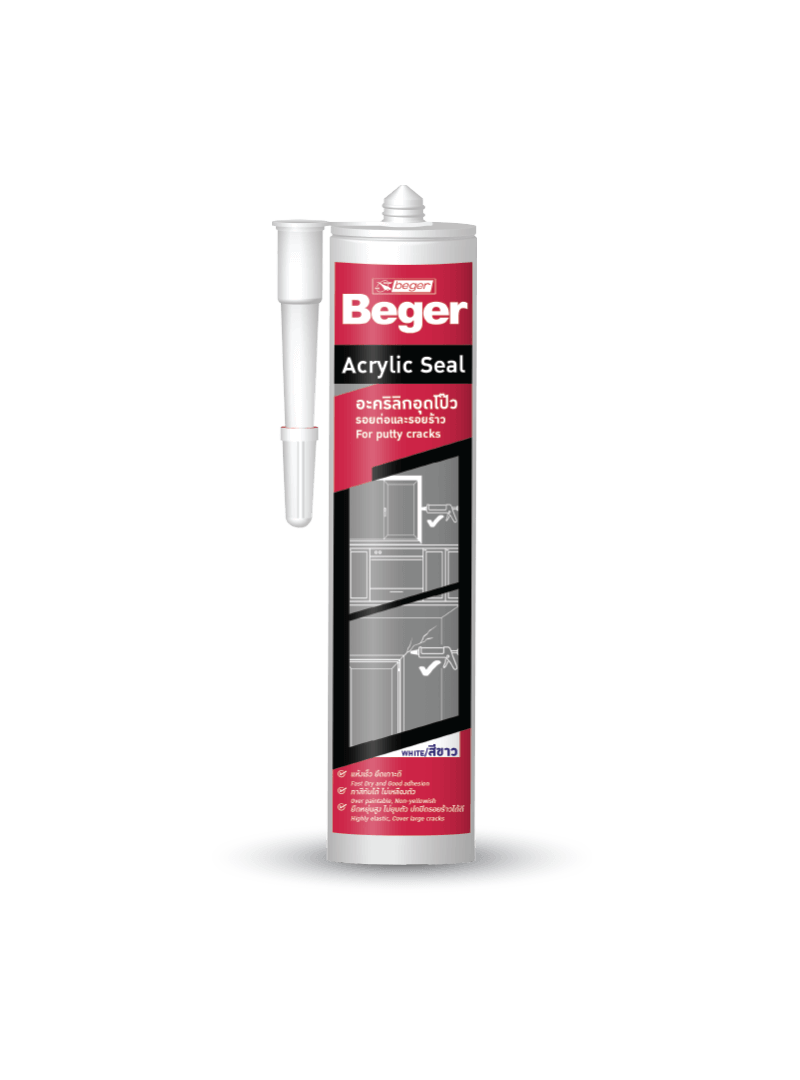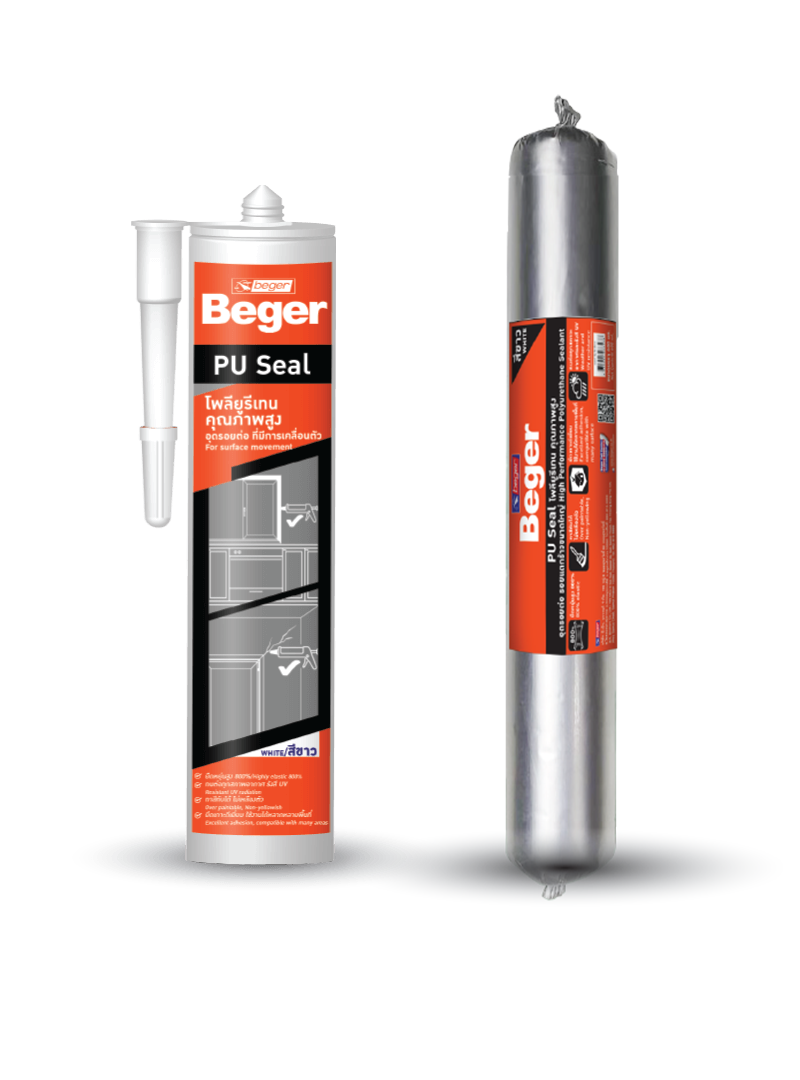
A sealant tube is an essential tool for both contractors and homeowners. Compact, easy to use, and versatile, it helps fill cracks, joints, and gaps in various areas—such as window frames, wall fissures, bathrooms, and moisture-prone zones. But choosing the wrong type of sealant can lead to recurring problems like water leaks, peeling paint, mold growth, or even structural damage—resulting in unnecessary repair costs.
Today, the market offers several types of sealants—most commonly acrylic sealants, silicone sealants, and PU (polyurethane) sealants. Each has its own strengths and ideal applications, depending on surface type, location, and environmental exposure. Selecting the right sealant ensures your construction or renovation project is durable, weather-resistant, and professional-grade.
In this article, Beger will guide you through the differences between these popular sealant tube types and help you determine which one suits your needs best—for a clean, long-lasting result you can trust.
Types of Sealants
Types of sealants vary based on their components, including acrylic, silicone, and polyurethane. Let's see how different they are in this article!
Acrylic Sealants (DAP)
Acrylic sealant or DAP is widely used and popular because it can use with various materials such as cement, concrete, or precast. It also has the lowest price among all types of sealants. Acrylic sealant allows for easy reapplication and does not leave stains on porous surfaces. However, it has limited resistance to moisture and low flexibility, making it unsuitable for use in areas with moving cracks or high moisture.
So, it is suitable for interior use more than exterior use, such as small to moderate joints or cracks at the window and door frames or interior walls, the installation of window or door frames and built-in furniture, and joints in the quiet area. If you need high-quality and affordable acrylic sealant, Beger Acrylic Seal is here for you.
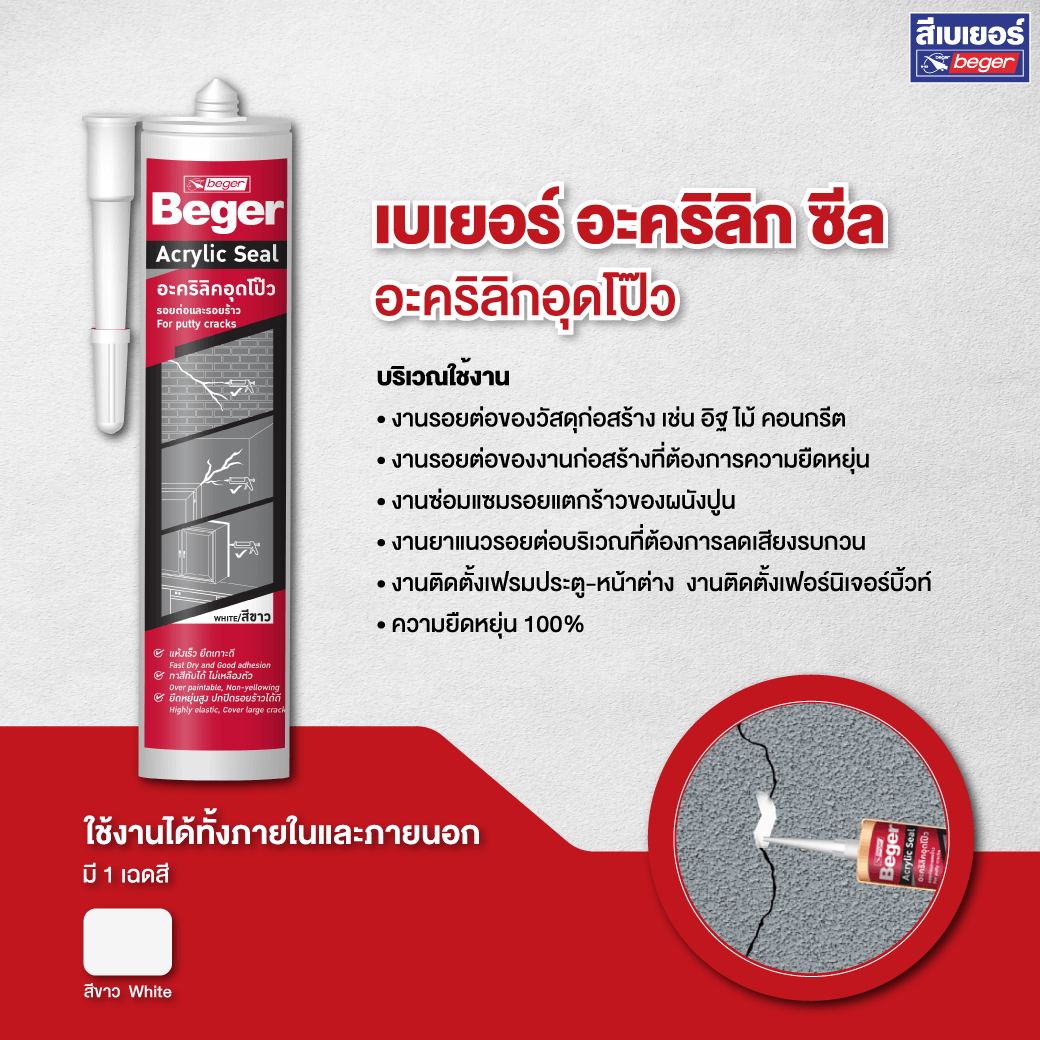
Silicone Sealants
Silicone sealant is a liquid content available in clear, white, grey, and black finishes. Once it dries, it forms hard and flexible content. Silicone sealant is commonly used for various works, including filling joints around mirrors and ceramics in kitchens or installing sanitary.
Due to its benefits of high flexibility, fast drying, and weathering resistance, silicone sealant is suitable for moving joints and cracks. However, this sealant cannot be painted over. For the silicone on sale currently, there are 2 types as below:
- Acetic Cure Silicone Sealant comes with a beneficial acid that smells like vinegar. The acid offers properties in fast drying and higher adhesion power than non-acid silicone sealant. But due to acid corrosion, this type of silicone sealant is not suited to metal or marblework, and you should wear protective equipment such as rubber gloves, masks, or safety glasses while working. Among Beger products, Beger Silicone Seal is sort of an acid-based silicone sealant that can be easily purchased at a reasonable price.
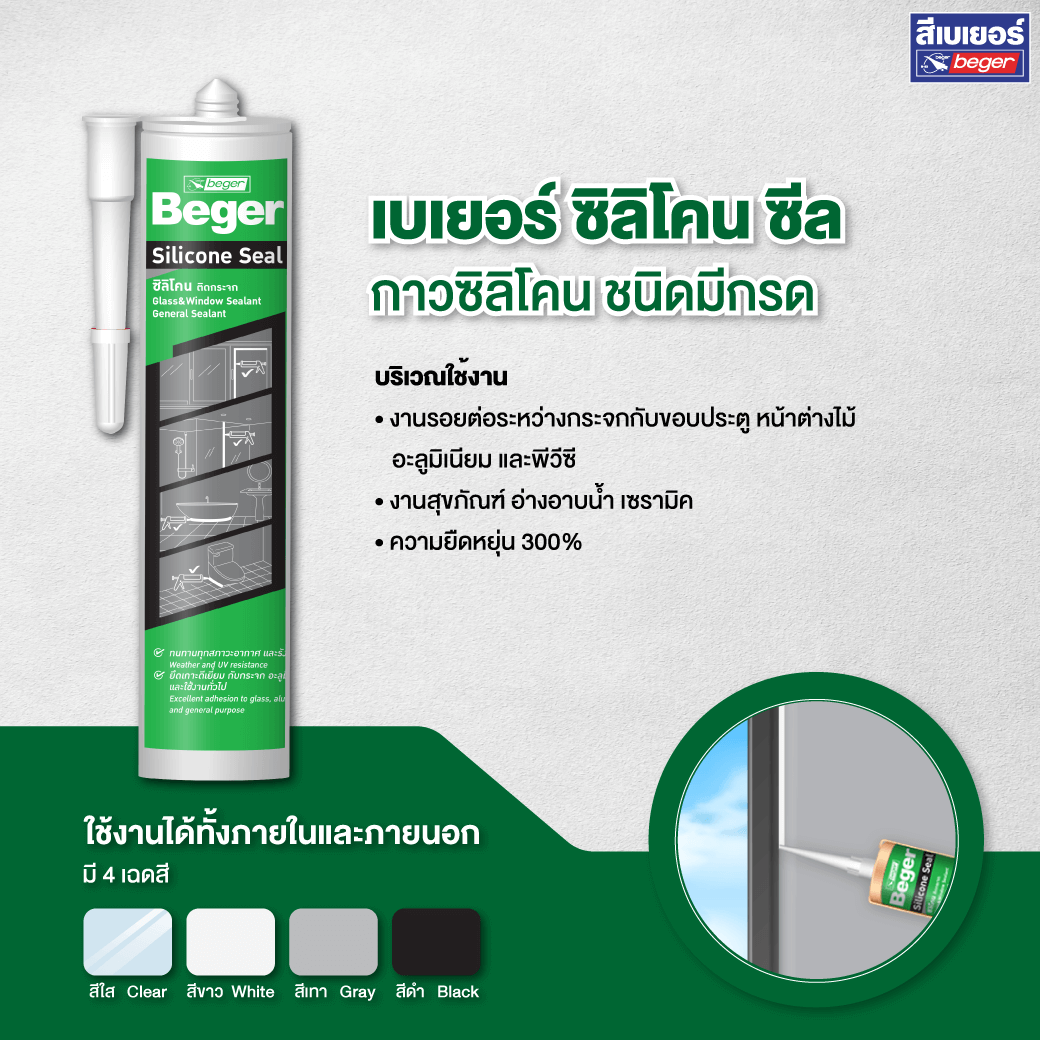
- Neutral Cure Silicone Sealant such as Beger Premium Silicone Seal, 100% silicone-based with acidless, is suitable for almost all materials like ceramic, marble, and metal. It provides low odor and over 500% flexibility. On the other hand, the durability and fast drying properties of Beger Silicone Seal provide lower levels than Beger Premium Silicone Seal (acid formula).
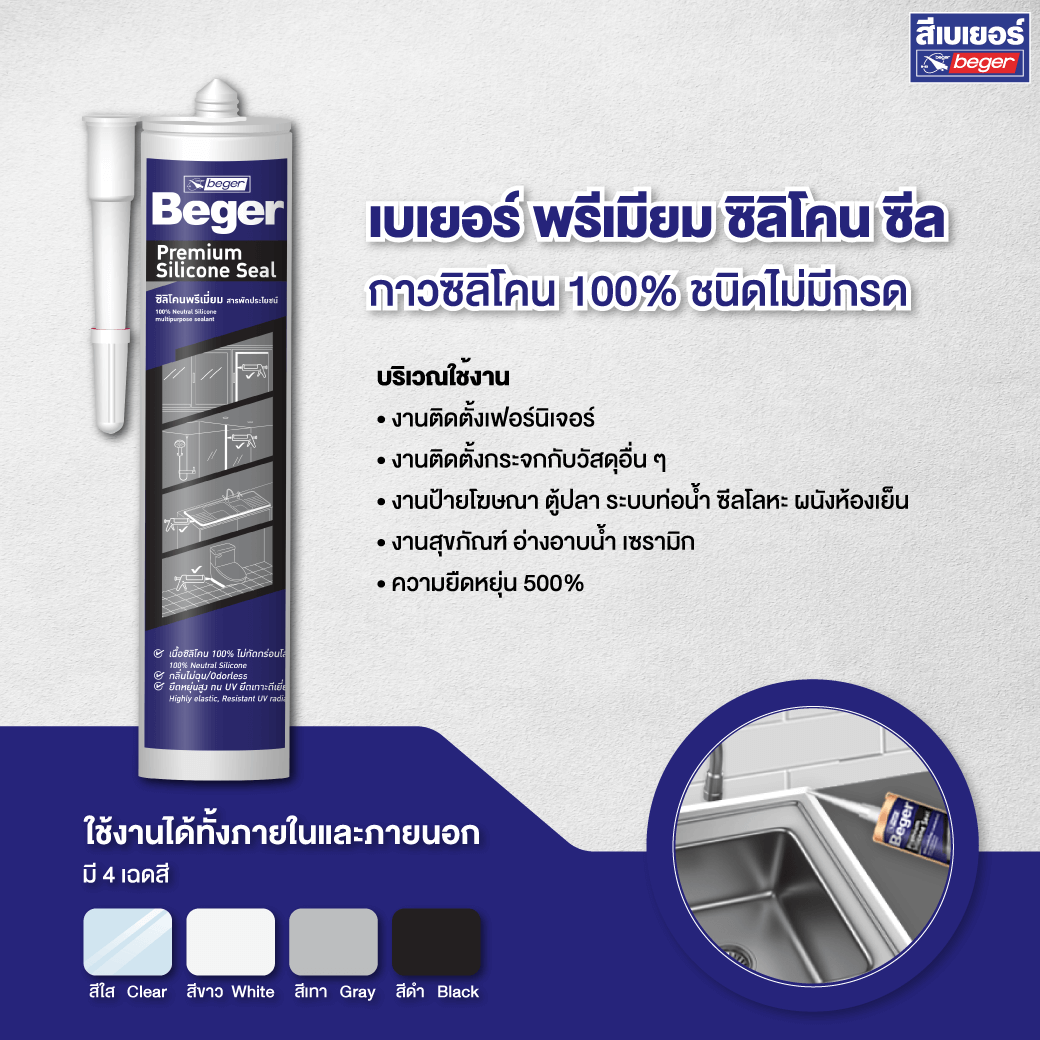
PU Sealants
PU Sealant is the most durable and flexible among all types of sealants. Its main component is polyurethane which is suitable for almost all materials, including steel, wood, fiber cement, ceramic, stone, and other porous materials. It can be recoated and is widely used to seal cracks on leaked roofs, especially during the rainy season, and joints between concrete floors or precast concrete. Due to its worth benefits, PU sealant is at a high but reasonable price. An example of such a sealant is Beger PU Seal, which offers 800% flexibility.

The Difference of Acrylic Sealants, Silicone Sealants, and PU Sealants
To make it more clear about sealants, you can look at the summary table below:
| Property/Type | Acrylic | Silicone (Acetic) | Silicone (Neutral) | PU |
| Painting | Recoatable | Nonrecoatable | Nonrecoatable | Recoatable |
| Shrinkage | Low | Very Low | Very Low | Very Low |
| Recoat Dry Time* | Moderate | Fast | Very Fast | Fast |
| Impact Resistance | Moderate | Good | Good | Excellent |
| Flexibility | 100% | 300% | 500% | 800% |
| Durability | Moderate | Good | Good | Excellent |
| UV Resistance | Moderate | Excellent | Excellent | Excellent |
| Application Area |
|
|
|
|
| Notice | Suitable for interior work, not for wet and damp areas | Acid odor, unsuitable for metal and marblework | - | - |
| Product |
Beger Acrylic Seal 45 - 50 Baht* |
Beger Silicone Seal 95 - 105 Baht* |
Beger Premium Silicone Seal 130 - 160 Baht* |
Beger PU Seal** 200 - 280 Baht* |
| Color | White | Clear, White, Black, Grey | Clear, White, Black, Grey | White, Grey |
*The dry time of products depends on the weather conditions. | Product prices may vary, so contact your nearby Beger store to confirm the price.
** Beger PU Seal 600 ml. is available for sale.
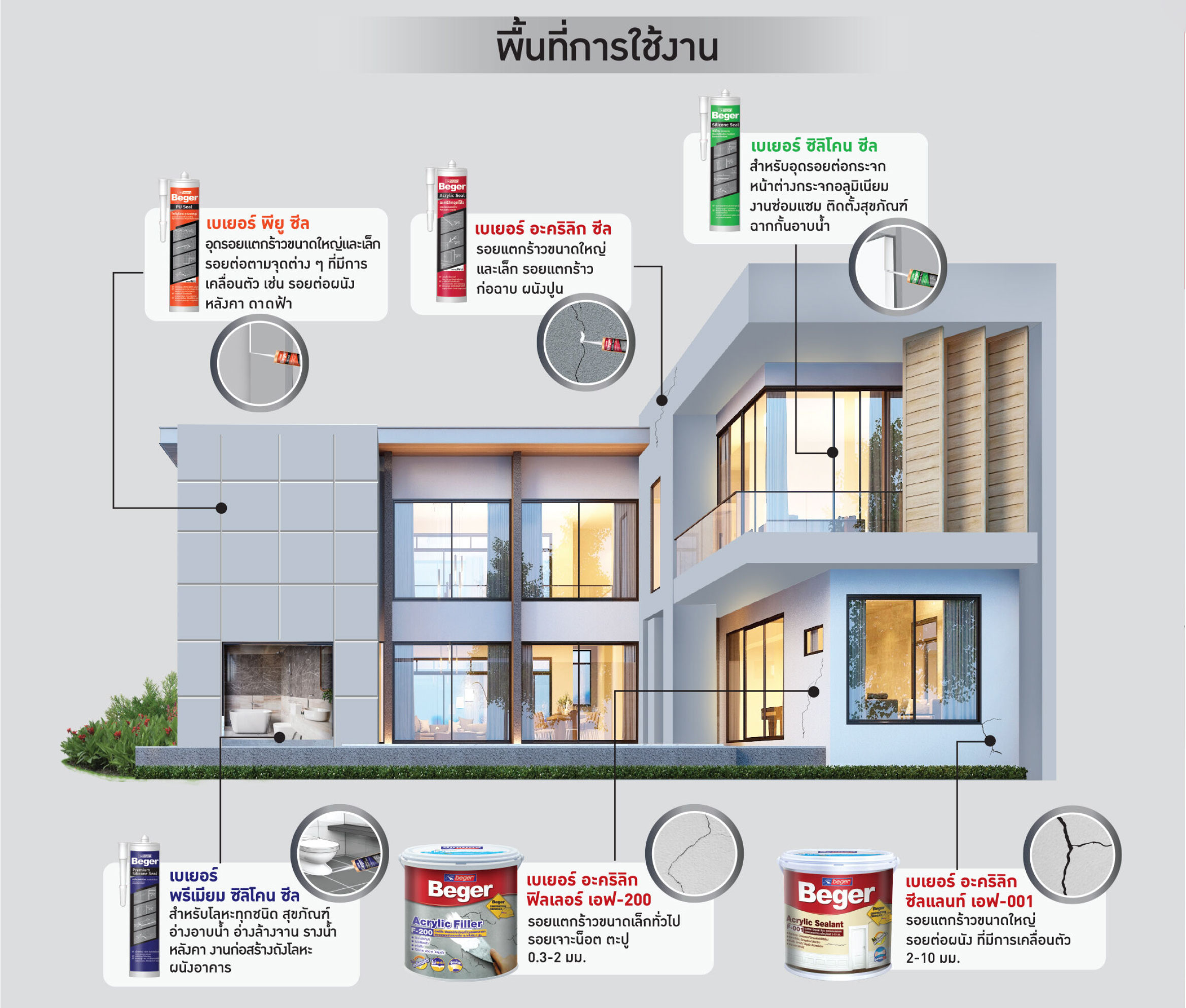
How to Use Sealants Properly
Step 1 Surface Preparation
Clean all dust, rust, grease, and dirt on the cracked surface or joints.

Step 2 Installing the Sealant with the Gun
Cut the tips of the plastic cap obliquely and then cut to open the sealant tube.

Put them together and then install the sealant tube into the gun.
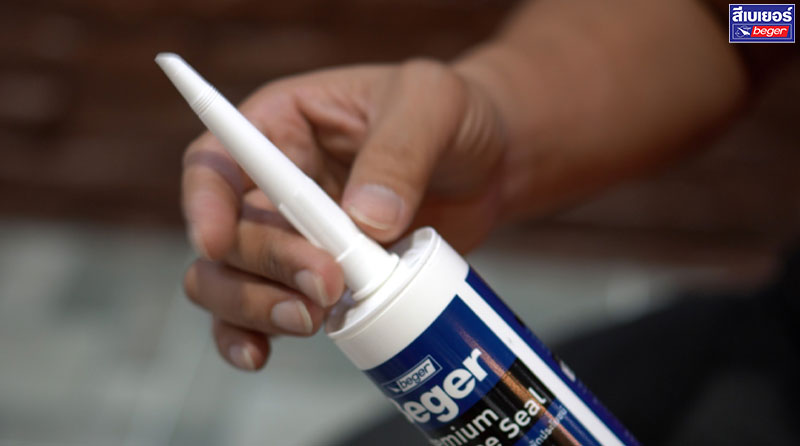
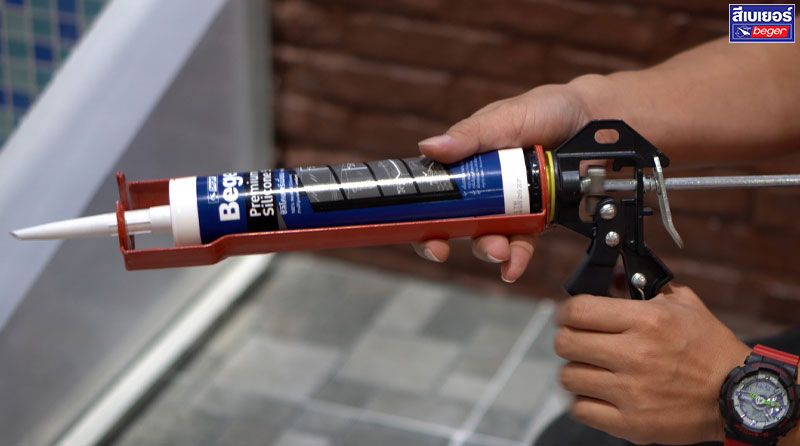
Step 3 Sealing
Squeeze the sealant gun to fill the cracks or joints and spread it evenly. To enhance safety, wear protective equipment such as gloves, glasses, and masks while working.
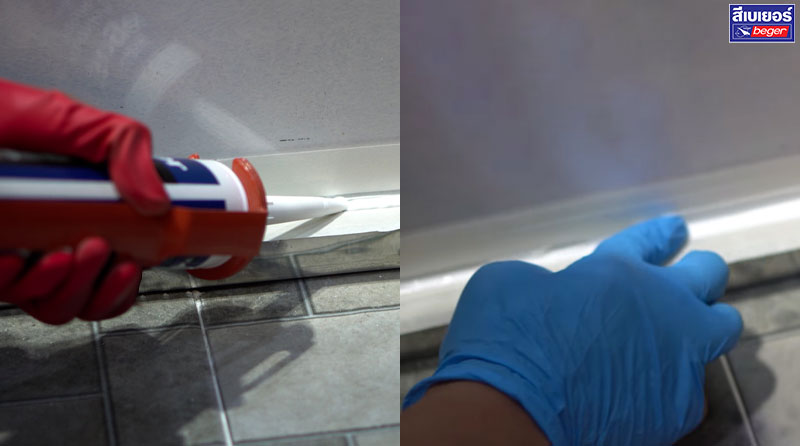
Step 4 Inspection and Painting
Clean any excess sealant by gently wiping it with a damp sponge or cloth. Leave it dry for at least 24-48 hours before painting the next coat according to the protective paint system as 1 coat of primer and 2 coats of top coat.
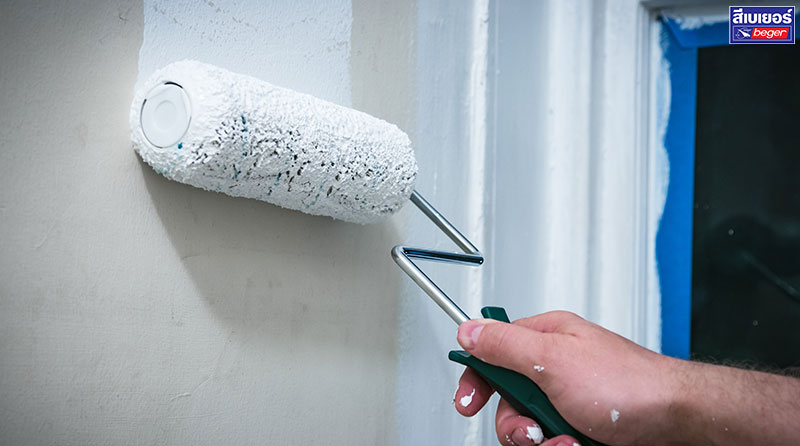
Frequent Questions About Sealants
Can we use sealants to replace tile grout?
- It is not recommended. Beger Tile-Bond Plus is suitable for tile more than sealants, especially in properties such as durability, dirt pickup, mold protection, and moisture and chemical resistance. When comparing the coverage and price, using sealants tends to be more waste.
How long is the lifespan of each sealant?
- Acrylic sealant is about 3-5 years.
- Silicone sealant is about 5-10 years.
- PU sealant is about 5-10 years.
Note: The lifespan of sealant depends on the surfaces and grade of the top coat. Proper surface preparation will enhance the lifespan.
How to store sealants properly?
- An unopened product can be stored for up to 1 year from manufacturing. It should be stored at a dry place with a temperature not exceeding 30℃. This product is suitable for one-time use to ensure the best effect.
How to remove sealant from your hands or stain on your clothes?
- You can wash off sealants from your hands using soap, dishwashing liquid, rubbing alcohol, or acetone-based nail polish remover. However, avoid washing with paint thinner as it can affect your hands.
- If sealants stain clothes, do not allow the stains to dry. You should quickly wash your clothes with warm water and detergent, and then rub until the stain is removed. However, after washing, there may still be acidic stains from the sealants on the clothes.
Sealant is a product that is easy to use, but it must be used carefully. Each type of sealant has specific limitations, so it's important to learn the directions and use it correctly to minimize mistakes or problems such as low durability, corrosion, premature delamination, using acetic silicone sealant for steelwork, or using an acrylic sealant for exterior and wet areas.


